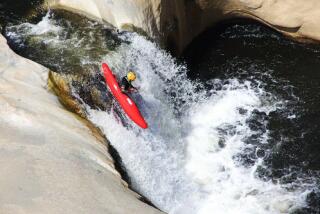To save or be saved
Expedition leader Eric Simonson understands Simon Yates’ decision to cut the rope, sending his climbing partner to what seemed like certain death. On May 27, 1994, Simonson radioed Mark Whetu and urged him to unclip himself from Michael Rheinberger — blind and unable to walk — and leave him tethered to a piton on steep terrain near the summit of Mt. Everest.
Whetu and Rheinberger had reached the summit just before dusk the previous day and chose to bivouac on its ridge rather than descend in darkness. By dawn they had run out of oxygen, and Rheinberger was suffering from cerebral edema. It took the pair from sunrise to sundown to descend only a few hundred feet, with Whetu dragging Rheinberger much of the way.
When Whetu radioed that he could drag Rheinberger no farther, Simonson, down at base camp, instructed him to abandon his friend. After much arguing, Whetu did so. Later, Rheinberger managed to move again on his own but ultimately fell to his death. Whetu lost most of both feet to frostbite.
“To me it was just a clear triage decision,” Simonson said last week. “Better to lose one than to lose two. I would put [Yates’] decision in the same category. He was lucky, because his partner lived. Our guy died.”
For Rob Hall, the opposite choice was equally clear. As the mountain guide descended Everest on May 10, 1996, his client, Doug Hansen, lost his ability to walk. Hall radioed Guy Cotter who, speaking from base camp, urged Hall to save himself. “He said to me, ‘The man is still alive,’ ” Cotter recounted last week. “That was the bottom line for Rob. Rob just morally couldn’t go there. He couldn’t abandon Hansen while Hansen was still going, was still alive.”
Within hours, both men perished.
— Scott Doggett
More to Read
Sign up for The Wild
We’ll help you find the best places to hike, bike and run, as well as the perfect silent spots for meditation and yoga.
You may occasionally receive promotional content from the Los Angeles Times.






